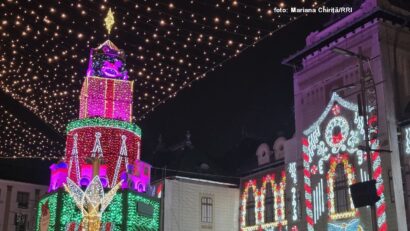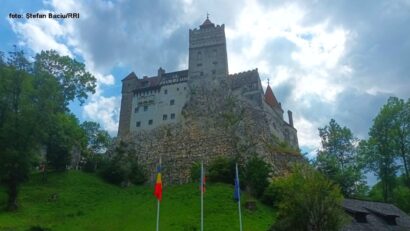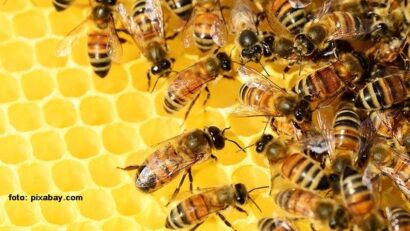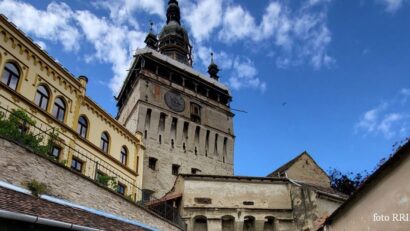Tourist attractions in Suceava County
Picturesque landscapes, historical monuments and outstanding traditions
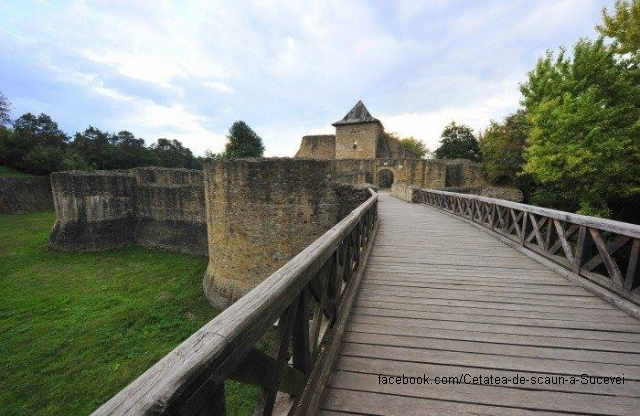
Daniel Onea, 13.09.2018, 00:20
With its picturesque landscapes, historical monuments and outstanding traditions, the county of Suceava comes as a surprise to tourists both through its simplicity and originality. Any trip here should start from the county seat bearing the same name, where the Princely Court fortress, the Bukovinan Village Museum and the Ethnographic Museum are not to miss. Suceava is the perfect jumping off point for exploring the mountainous area around the Vatra Dornei resort as well as for the famous painted monasteries, which are also among the regions worth visiting hotspots. Our guide today is Catalina Velniciuc, advisor with the Tourist Information and Promotion Centre of Suceava:
Catalina Velniciuc: “A tourist who has never been to Suceava will certainly be impressed by the Princely Court fortess here, which is quite unique in Romania. This is also one of Romanias first citadels, whose ruins are housing a permanent exhibition. As visitors enter the fortress, they will find themselves in a genuine medieval atmosphere and captivated by the stories narrated by the virtual guides. At night, the citadel walls serve as a huge screen for a special show of light and sound depicting battle scenes from the past. Wed like to mention that the biggest travel site, Trip Advisor, has this year granted the Suceava Princely Court the Certificate of Excellence, a certification that weve got thanks to the very good reviews from the tourists that have visited us.
Another spot worth visiting here in Suceava is the recently refurbished History Museum. According to Catalina Velniciuc, this museum is unique at national level in terms of presentation and interactivity. The most interesting items on display are explained against their historical background, in a modern and attractive manner.
Catalina Velniciuc: Close to the Princely Court Fortress there lies the Bukovinan Village Museum, which is the youngest outdoor museum in Romania. By visiting this museum, which displays genuine monuments of traditional architecture including households, traditional workshops, schools, churches and so on, visitors can get a glimpse of the lifestyle of the former inhabitants of Bukovina. The museum also offers a good representation of the peasants spiritual life, various rituals of birth, burial and wedding.
The most important place to visit in Suceava is the St. George church, part of the St. John Monastery.
Catalina Velniciuc: “This is the greatest religious and historical edifice of Suceava, and a UNESCO monument. This was the metropolitan cathedral of Moldavia until the late 17th century. The main attraction for tourists is the reliquary with the remains of St. John the New, the saint after whom the church is named. Each year, on June 24th, thousands of pilgrims come to pay tribute to the saint. Other important sites are the Natural Science Museum, the Ethnography Museum, the Royal Inn, and the Astronomy Observatory.
In the mountainous area of Suceava County you can find Vatra Dornei, a famous spa which has developed a lot in the last few years. Here is Catalina Velniciuc, adviser with the Tourism Information and Promotion Centre:
Catalina Velniciuc: “If you are a fan of active tourism, who loves going to the mountains, Vatra Dornei is a great place to spend time, with a variety of activities, such as trekking, fishing on Bistrita River, paragliding in Suhard, river rafting or kayaking, via ferrata, zip lining, horse riding or mountain biking. And, since the cold season is getting near, in Vatra Dornei we have 3 medium-difficulty ski slopes. One is 3,000 meters long, another is 800 meters, and the third is 1,500 meters. We have snow cannons, night lighting, with a ski lift, and a baby ski track. The attraction would be the Vatra Dornei ski lift, which can be used at all times of the year, not just during the winter. You can have a great trip, going up to 1,200 meters. The climb is about 25 minutes long.
At the Suceava Tourism Information Center you can find lots of promotional material, and also detailed maps of the area. A county map is captioned in Romanian, English, German, and French. You can also find materials in Polish, Spanish, Italian, and Ukrainian. Catalina Velniciuc, adviser with the Tourism Information and Promotion Centre, told us that most tourists ask first about the painted monasteries of Bukovina, most of them part of the UNESCO world heritage fund:
Catalina Velniciuc: “The UNESCO world heritage fund sites are the monasteries of Arbore, Pătrăuți, Clopota, Voroneț, Mănăstirea Humorului, Sucevița, and Moldovița. They are all beautiful. They were mostly built in the second half of the 15th century and the early 16th century. They stand out due to their mural painting, indoor and outdoor, in vegetal dies, delighting the visitors with Biblical themes. I can still remember the reaction of a tourist from Japan. He was traveling alone, and came to see the monasteries. He was profoundly touched. He said that he doesn’t understand much of our faith and religion, but he was impressed by the paintings, and said he would gladly come back, and would recommend the paintings to anyone. His expression and the way he described his experience made us understand once again how valuable these monasteries are.
According to the latest statistics, the greatest number of tourists to the area came from EU countries, mostly from Spain, followed by Germany, Italy, France, Poland, Austria, the Netherlands, and the UK.
(translated by: Daniel Bilt, Calin Cotoiu)

